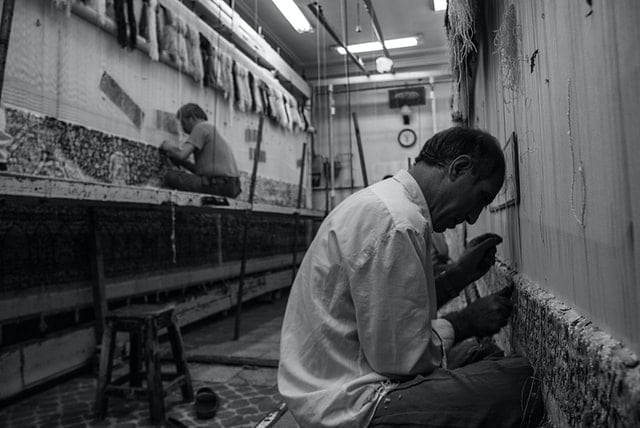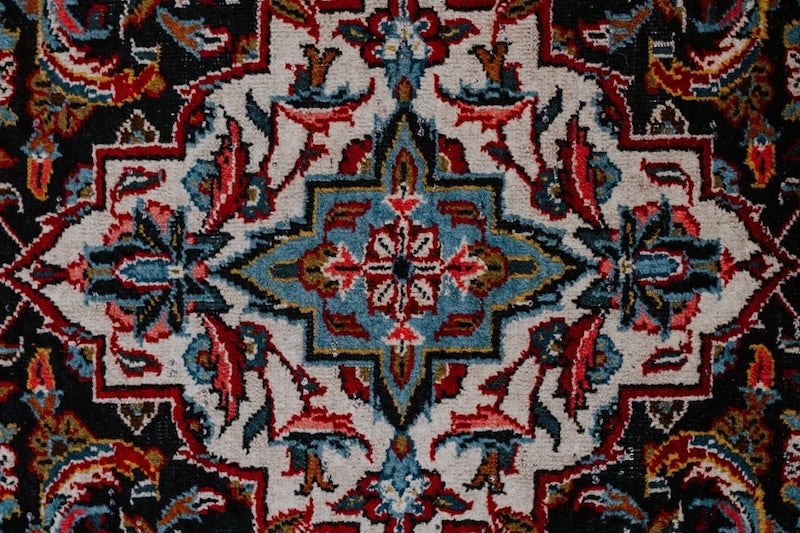From time immemorial, one of the world-famous Iranian goods has been hand-made carpets. But in recent decades, this national industry has encountered a big recession and somehow lost its booming international market.
The causes of the downturn of hand-woven Iranian carpets can be examined through cultural and economic aspects.
In describing the cultural barriers, it could be said that with the change in Iranian society’s lifestyle in the past few years, the Iranian people, like foreign countries, have moved towards fashion and the use of new decorations.
Thus, the desire of young people to use hand-made carpets has decreased. Some experts believe that the main reason for hand-woven carpets’ recession is the change in the tendencies of the people of the world and Iran. Consequently, they believe that today’s carpets’ design and pattern should be updated. On the other hand, with the expansion of machine-made carpets’ production, Iranian houses have also been emptied of this pure cultural art.
Moreover, the other two significant reasons that keep Iranian homes from the beauty of national hand-woven carpets include increasing rugs cost and decreasing society’s purchasing power due to economic issues that govern Iranian society.

Although even expensive carpets have their own buyers in the country, many people are looking for cheap floorings. Some professionals believe that the increase in the raw material price led to the rise in hand-made carpets’ price and reduced people’s purchasing power.
The raw materials that Iranian used to produce in the country are now imported, having much more expenses. For instance, the wool that used to be produced domestically is now imported from Australia and China.
High inflation in the country’s economy has also caused the wages of carpet weavers to increase every day, and as a result, the price of carpets has become more expensive. Also, the increase in silk import tariffs raised the cost of raw materials and, consequently, hand-made rugs. As a result, part of hand-woven Iranian carpets’ competitiveness was taken both in the domestic market and in the international market. Failure to increase the exchange rate in line with inflation and the annual employees’ salary increment causes the workforce to expect higher wages.

Accordingly, Iranian weavers have always demanded higher wages in recent years, which ultimately amounts to such wages that it is uncompetitive with countries such as India, Afghanistan, or China. The wages of workers in these countries are much lower; for example, Indian workers weave carpets for a meal from dawn to dusk.
Iranian competitors have been able to produce cheap carpets in recent years due to the cheapness of raw materials, while Iran has to import silk from abroad at a high cost. The price of Chinese, Pakistani and Indian carpets is lower than Iranian carpets, but they still have not been able to catch up with Persian hand-woven rugs.
The domestic hand-woven carpet market is currently in an unfortunate recession. The main reason for this is that exports are in a slowdown. It can be said that about 90 to 95% of hand-made Iranian carpets are eventually exported. This means that even if people buy hand-made rugs for home use, after a while, it is not possible to work with old carpets, and there is no other way but to export them. Now, if the export market is sluggish, the result will be that the domestic market will also be in recession.

Hand-made carpets have long been considered as one of the most important non-oil exports of Iran. However, at the present time, the export and currency exchange of the Iranian hand-woven carpet industry is not pleased. According to the Iranian Carpet Scientific Association chairman, carpet exports in the first eight months of 2020 were less than $ 50 million, about one-tenth of the average $ 500 million in carpet exports in the last two decades. Since 2019, with the withdrawal of the United States from Barjam and the imposition of sanctions, the increasing trend of hand-made carpet exports has stopped, and its downward trend has begun.
According to this official, the export of hand-made carpets in 2015 was about 290 million dollars, in 2016 about 359 million dollars and in 2017 was equivalent to 426 million dollars, and in 2018 the export of hand-made carpets reached 238 million dollars.

Numerous domestic and foreign factors have been influential in reducing hand-made Iranian carpets’ export over the past few years. Great points in the carpets export are sanctions, economic problems, high export risk in some target markets, currency transfer problems, increased transportation costs, and the like. The most important of these is the embargo on importing hand-woven Iranian carpets to the United States.
The United States was a quarter of the export market for hand-woven Iranian rugs. Given that the United States, as the largest importer of hand-made carpets, closed its doors to Iran, a decline in carpet exports has been expected. Part of exports decline has also occurred due to sanctions. All kinds of strict and variable rules and regulations caused problems for traders and merchants in the field of hand-made carpets.
Regulations related to export currency return, customs problems, rising costs, and export risk are among these damages. On the other hand, the economic recession in Europe, the arrival of alternative flooring, and domestic inflation were other factors that were effective in reducing the export of Iranian carpets.

According to the policies made by the government and the Islamic Consultative Assembly approvals, the producers and exporters of Iranian carpets are exempt from taxes, and only carpet sellers are required to pay taxes. In this case, a seller must buy a hand-made rug from a non-taxable producer and sell it to an exporter who is tax-exempt and pays tax on the product. This trend in the past years has caused hand-made carpets sellers to face many problems and in many cases quit their job.
Under these circumstances, Iranian carpet exports are decreasing day by day, while the exports of this sector were at their peak in the 90s and reached one billion and 700 million dollars. The decrease in the export of hand-woven carpets also has an adverse effect on this industry’s employment. In most cases, carpet weaving is a secondary job of individuals, and due to the stagnant sales situation in recent years, this sector has suffered severe damages.
In the meantime, the Corona crisis has made the situation more difficult for this sector’s activists than before. Undoubtedly, the hand-woven carpet industry, like other industries, is not unaffected by the Corona crisis. Of course, its most significant impact is on the producers because the prevalence of Coronavirus disrupted the usual routine, and producers faced a recession and severe liquidity. Because of the currency fluctuations of the past, several producers and weavers became unemployed.

Due to the dependence of carpet raw materials on the currency price, prices suddenly multiplied, which affected the final cost of carpets. As a result, carpet customers decreased both domestically and overseas, but now with the Corona crisis, the situation is even more challenging. Countries that used to be the primary buyers of Iranian carpets today face economic and political conditions that have reduced their purchases.
Iranian carpet activists targeted new markets even in the worst conditions of sanctions and closure of the US market, and at the same time even turned a competitor like China into a buyer of Iranian carpets. We also hope to observe Iran’s progress in exports and development of its precious hand-woven rugs by using various trade tools, such as holding overseas exhibitions and advertising the target markets.



















